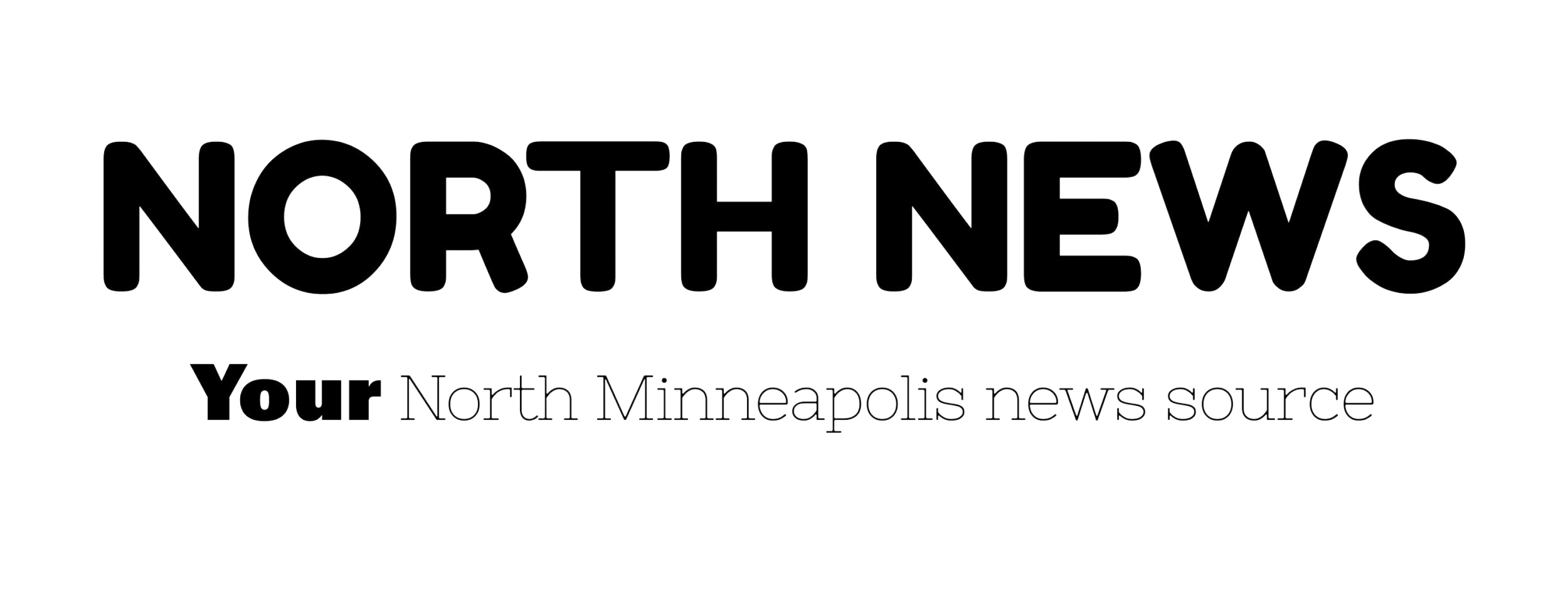Religious leaders put their faith in online services
The Rev. Richard H. Coleman leads an online service in front of a mostly empty sanctuary at Wayman A.M.E. Church. Photo by David Pierini
By David Pierini Staff Reporter
The Rev. Richard H. Coleman preached with his usual emphatic urging, but the words fell on empty chairs at Wayman A.M.E. Church.
There was one saving grace–a tiny video camera tethered to a laptop at the back of the church, streaming the sermon to congregants quarantined in their homes.
“I know we hear the daily updates, and we are filled with confusion and our hearts are loaded with fear,” Coleman said. “Perfect love casts out fear. God loves us. In God, there is no fear.”
In the month since the COVID-19 outbreak arrived in Minnesota, North Minneapolis faith communities have scrambled to stay connected to their members under strict orders of social distancing. Churches, mosques and temples are places for people to gather and are of special comfort in times of crisis. But in this crisis, congregations must do the opposite.
Makram El-Amin, the imam at Masjid An-Nur mosque, posts a jumah prayer each Friday on Facebook.
“The nature of congregational life is all about gathering,” said Makram El-Amin, the imam at Masjid An-Nur mosque. “Now we have totally converted to an online society. This is basically one of those moments that make you pause and think about yourself, your life and your faith. This is temporary and one day, god willing, we will be able to celebrate one another, our community, our humanity.”
El-Amin streams Friday prayers from the webcam on his laptop in a home office. His video of last Friday’s jumah prayer drew 357 views on the mosque’s Facebook page.
Large churches, like Shiloh Temple International Ministries and Sanctuary Covenant Church, have already had tech-savvy members operating state-of-the-art video and audio equipment every Sunday and have more seamlessly adjusted to taping or streaming their services for online viewing during the pandemic. Smaller churches are learning to use iPads, laptops and smartphones perched on music stands and broadcast services via Facebook Live or Zoom, a video conferencing program.
With two of the biggest Sundays of the year for Christians–Palm Sunday and Easter–coming up over the next two weekends, church leaders are learning to have faith their followers will use the devices they have to receive the gospel.
Amy Koopman sets up an iPad for taping a service at Redeemer Lutheran Church. Photo by David Pierini
“I don’t have much time to get up to speed, so I just have to do my best,” Coleman said in his sermon this past Sunday. It was his second Sunday delivering a service in an empty church. He was unsure of himself. “It’s such a challenge because in our experience, we call and respond, you know? There's a rhythm to it. The people have so much to do with the sermon.”
Coleman draws strength from a handful of church leaders that included an exhorter, the organ player, a couple of stewards and a camera operator. They were careful to keep at least six feet from one another.
The first virtual service Coleman officiated drew 75 views. That’s only about 25 down from the usual Sunday attendance.
The governor’s stay-at-home orders prohibit mass gatherings, allowing for only essential services to operate. Churches can operate with a few people to bring virtual services to members.
Churches that celebrate Holy Communion, like Redeemer Lutheran Church, have suspended the practice until members are allowed to attend Sunday services in person again. “Everybody has to be together for communion,” said the Rev. Sharon Kelly, Redeemer’s interim pastor. “Watching us take communion in a video will make people feel left out.”
Preaching to followers who aren’t physically present is just one challenge. Another is tithing. With collection plates idle, many churches direct members to tithe using the Cash App. Tithing pays for building and maintaining church buildings.
Online services are stripped down and run anywhere from 30 minutes to a little over an hour. There is music, but instead of a full-throated choir, a service might have a singer and a keyboard player.
“Music is such a big part of this faith community and right now we are just bare bones,” said Alyssa Schwitzer, the music director at Redeemer. She sings during an iPad-recorded 30-minute service led by Kelly.
Pastor Patrick Ray, right, turns his laptop toward church member Andra Monk for a recent prayer meeting. Northside Neighborhood Church, which usually meets in homes, is now gathering on Zoom. Photo by David Pierini
One upcoming service will include Redeemer and three other churches in a service that will gather on the video conferencing app, Zoom. Schwitzer said she will be at home contributing music for the services.
Pastor Patrick Ray uses Zoom to pray daily with members of his start-up church, Northside Neighborhood Church.
The church has about a dozen families that previously met in homes. These days, Ray will bring his laptop out to this porch, where he conference in with members but also invite neighbors to stand in his yhard for prayer.
“We’re just taking time to connect with one another,” Ray said. “People aren’t just missing the content of the sermon. We’re also missing connection. We’re trying to figure out how to connect. That’s what a church is called to do.”




